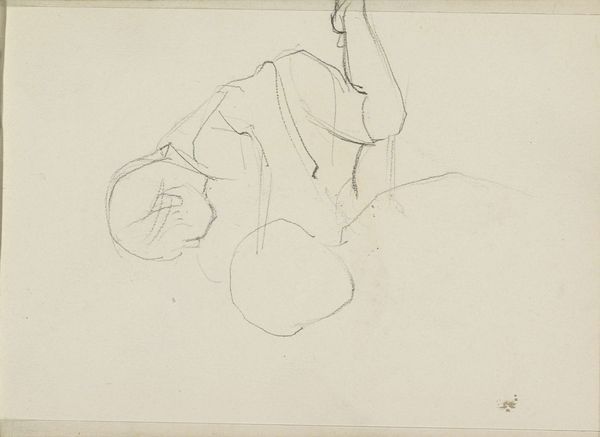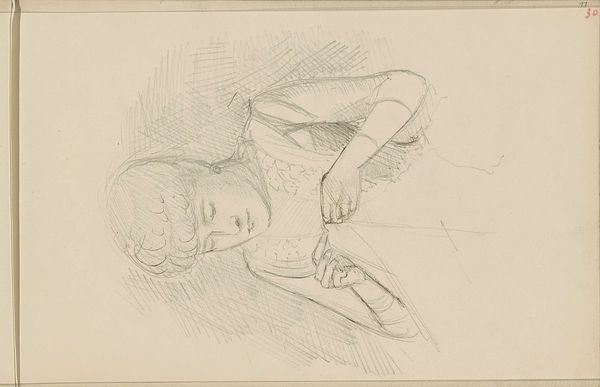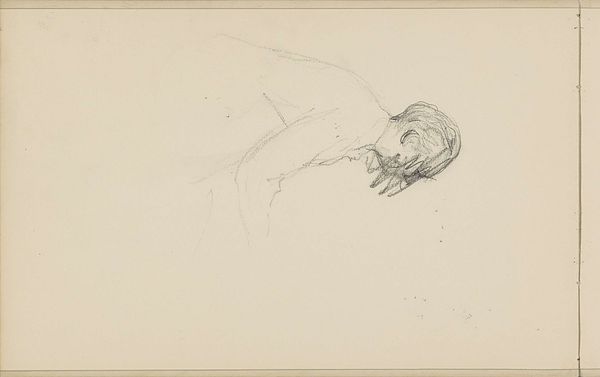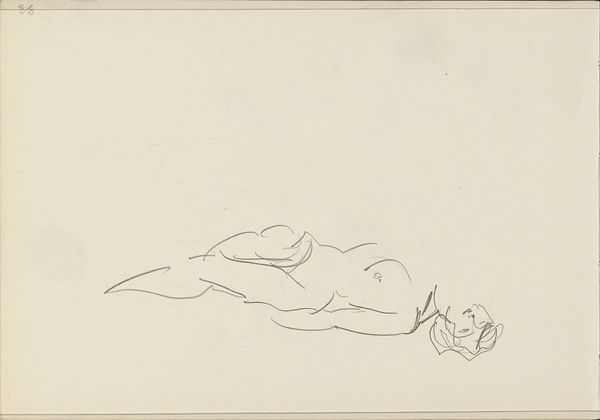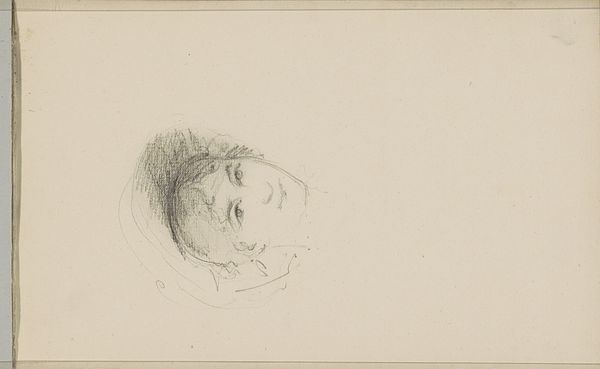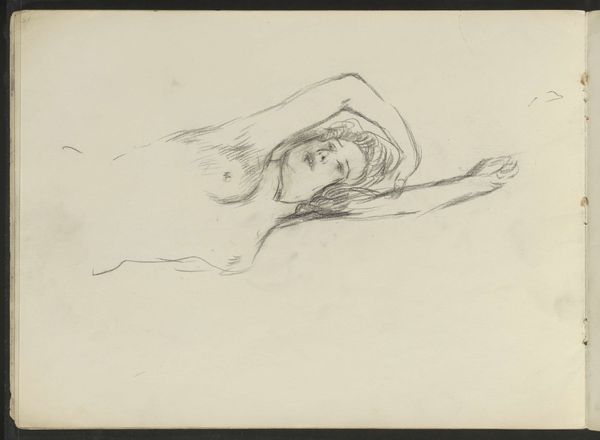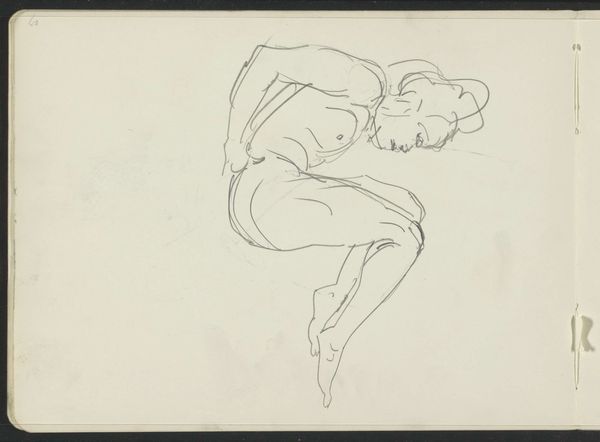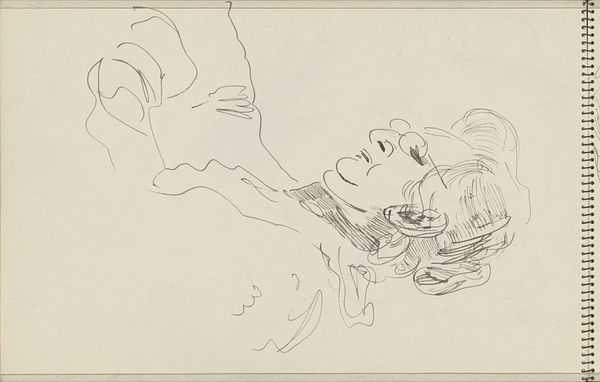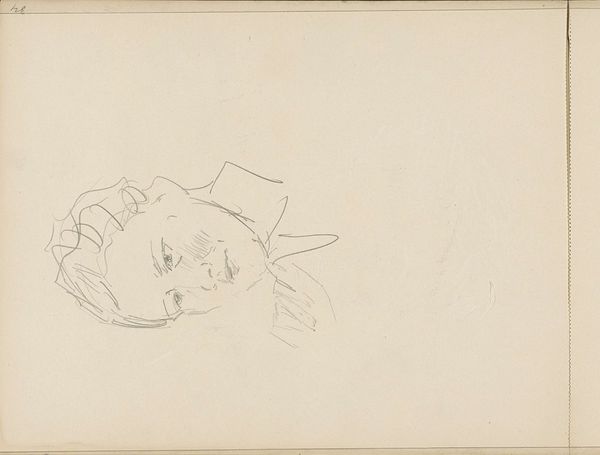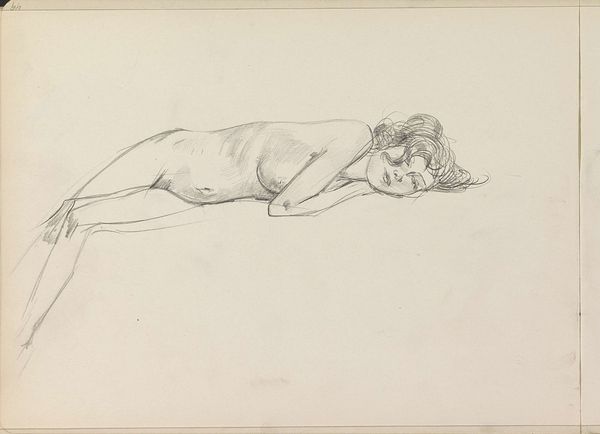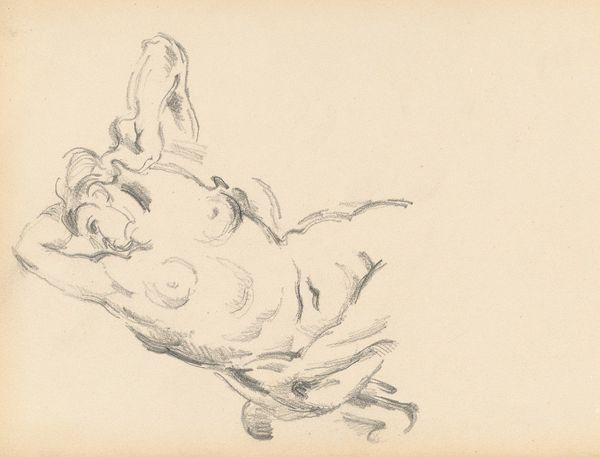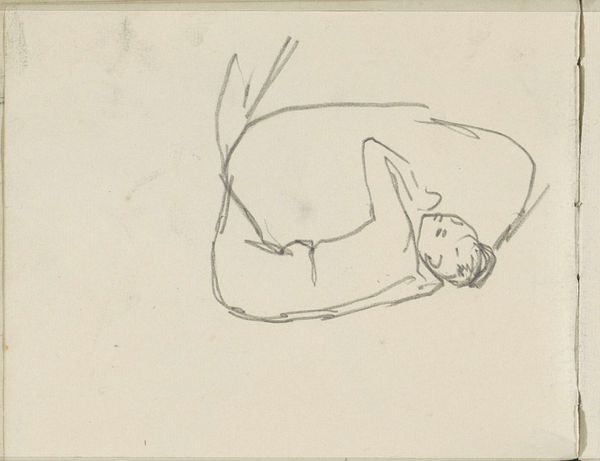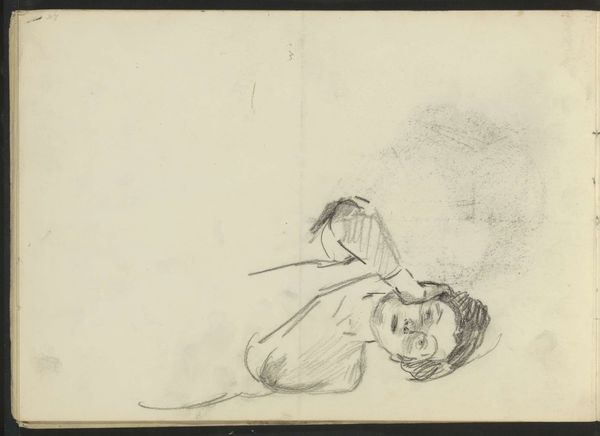
drawing, paper, pencil
#
drawing
#
amateur sketch
#
toned paper
#
light pencil work
#
impressionism
#
pencil sketch
#
figuration
#
paper
#
personal sketchbook
#
idea generation sketch
#
child
#
ink drawing experimentation
#
pen-ink sketch
#
pencil
#
sketchbook drawing
#
nude
#
sketchbook art
Copyright: Rijks Museum: Open Domain
Curator: Here we have Jozef Israëls' "Zittend naakt kind met krullen" – "Seated Nude Child with Curls" – a pencil drawing on paper, created sometime between 1834 and 1911. It currently resides here at the Rijksmuseum. Editor: My first thought is the intimacy of it. It feels so private, like we're peeking into a personal sketchbook. You can almost smell the paper. The material's almost more present than the subject, oddly enough. Curator: I agree. It captures a fleeting moment. Jozef Israëls, associated with the Hague School, was particularly interested in depicting everyday life and the lives of ordinary people, though mostly from the rural class. His work often aimed for emotional resonance rather than academic precision. So here, with the vulnerability of the nude, combined with that intimate medium and his interest in representing everyday moments— Editor: Everyday moment... That's a loaded term! Especially in the late 19th Century, considering how tightly policed images of the human body were. This might appear unassuming but consider what went into circulating drawings like these at the time; think about the paper, the sourcing of pencils, how that impacted its social value and exchange! I see this drawing as much more about how art and body politics were intertwined in daily practice. Curator: An excellent point. The drawing does exist within a complex web of social constraints and evolving artistic norms. But wouldn’t you also agree it showcases an emotional rawness—perhaps reflecting his Jewish identity and concern with social justice—within the broader narrative of Dutch Realism? Editor: Potentially. But without looking at the precise pigments and layering used by Israëls, such as how it affected production timelines for the drawing itself, these more abstract feelings of “social justice” become purely speculative. I see a tension between fine art and craft here. What do we really know about the economic circumstances which allowed for this piece’s creation, beyond the "fine art" label? Curator: Interesting... perhaps this reveals less about Israëls intentions and more about our current art world that tends to separate the idea of process from meaning. Editor: Precisely! And, ultimately, perhaps prompts us to ask further questions about those values, and their construction by society.
Comments
No comments
Be the first to comment and join the conversation on the ultimate creative platform.
